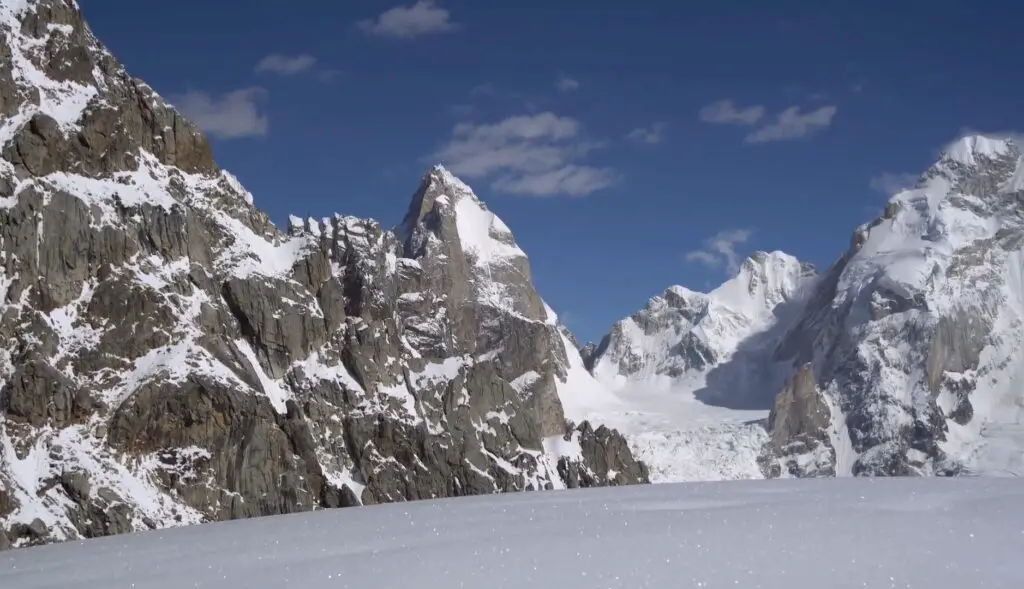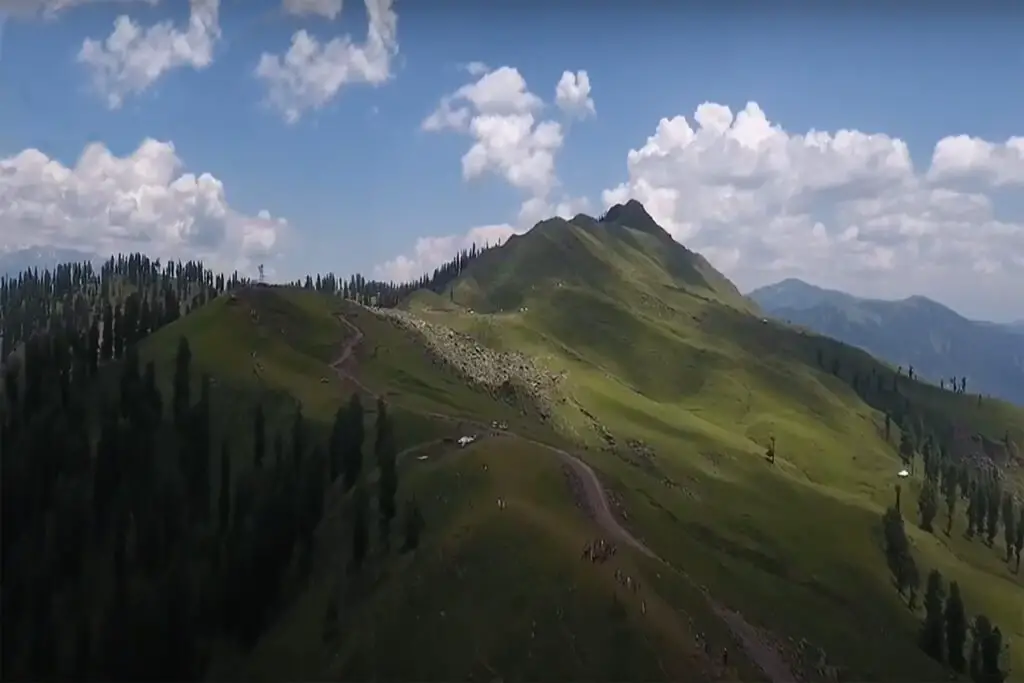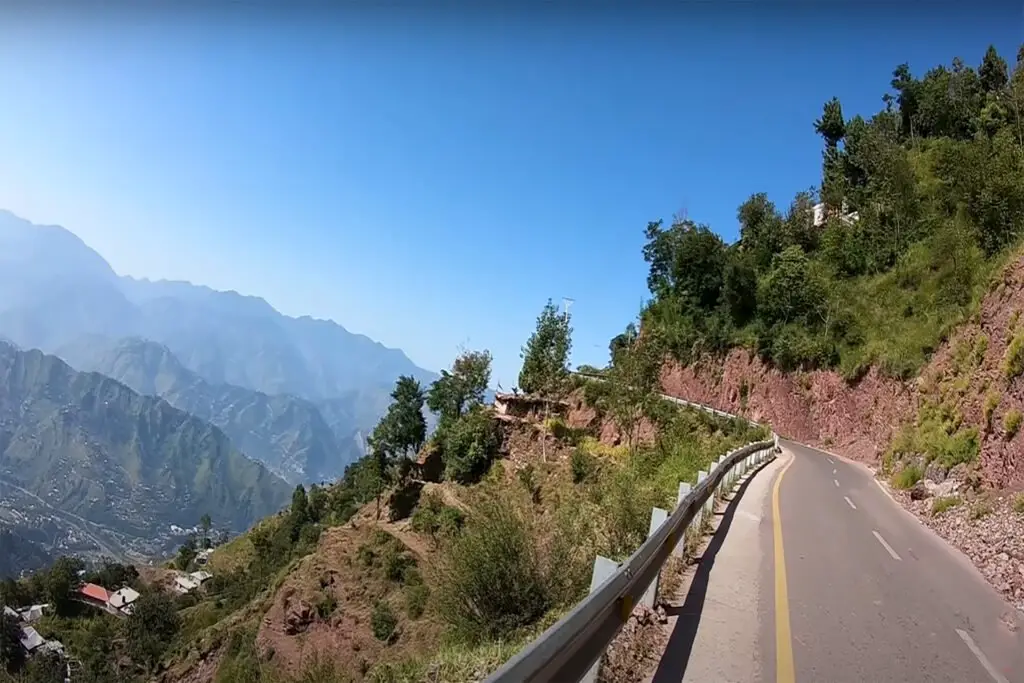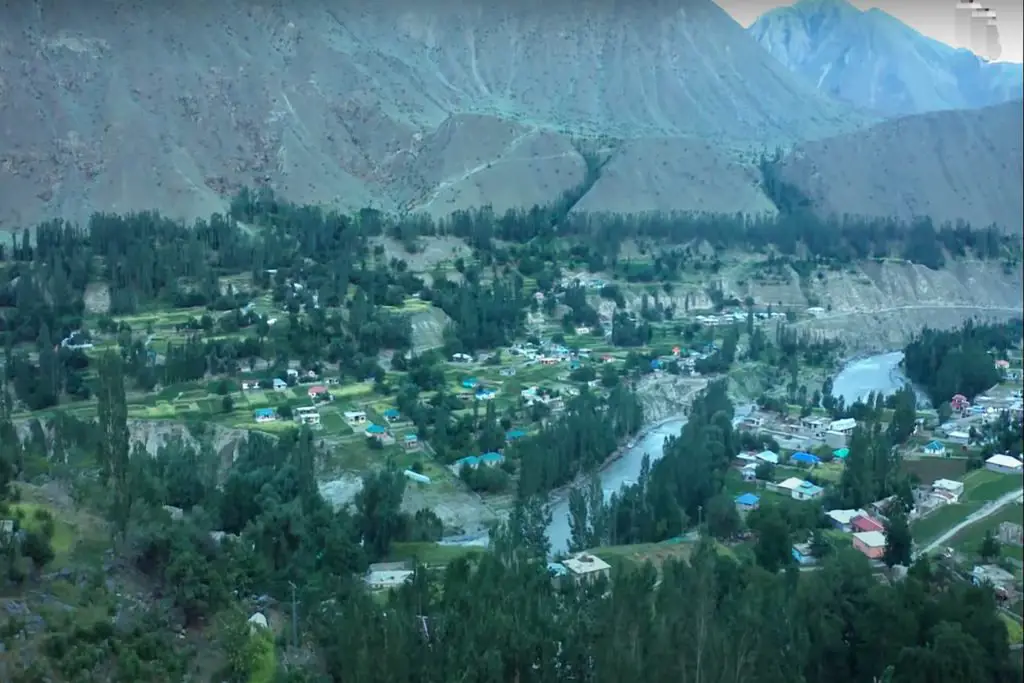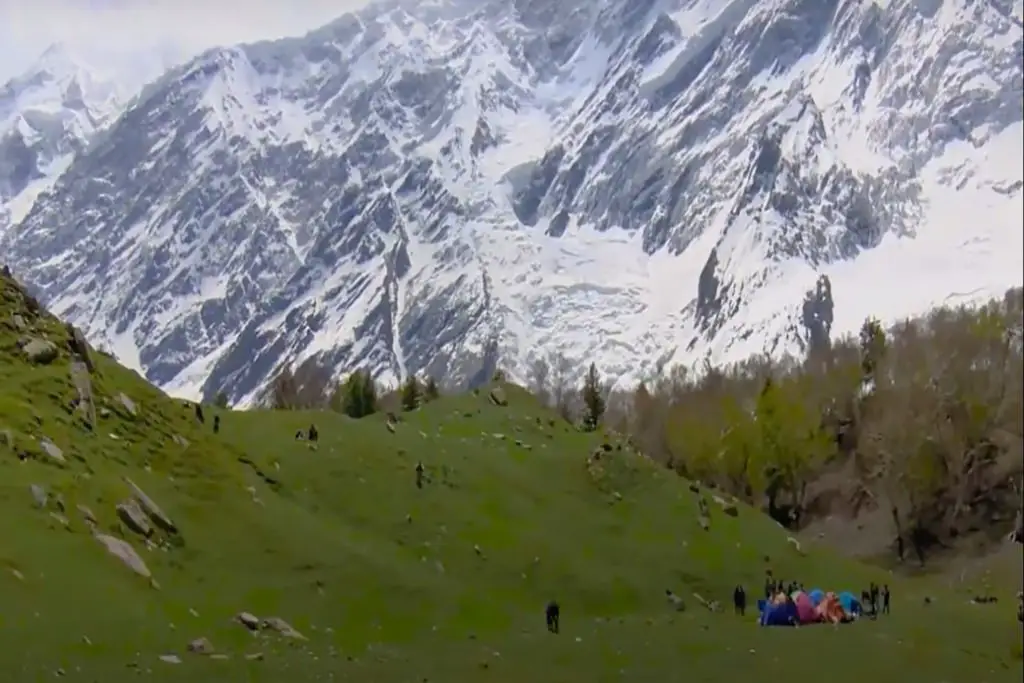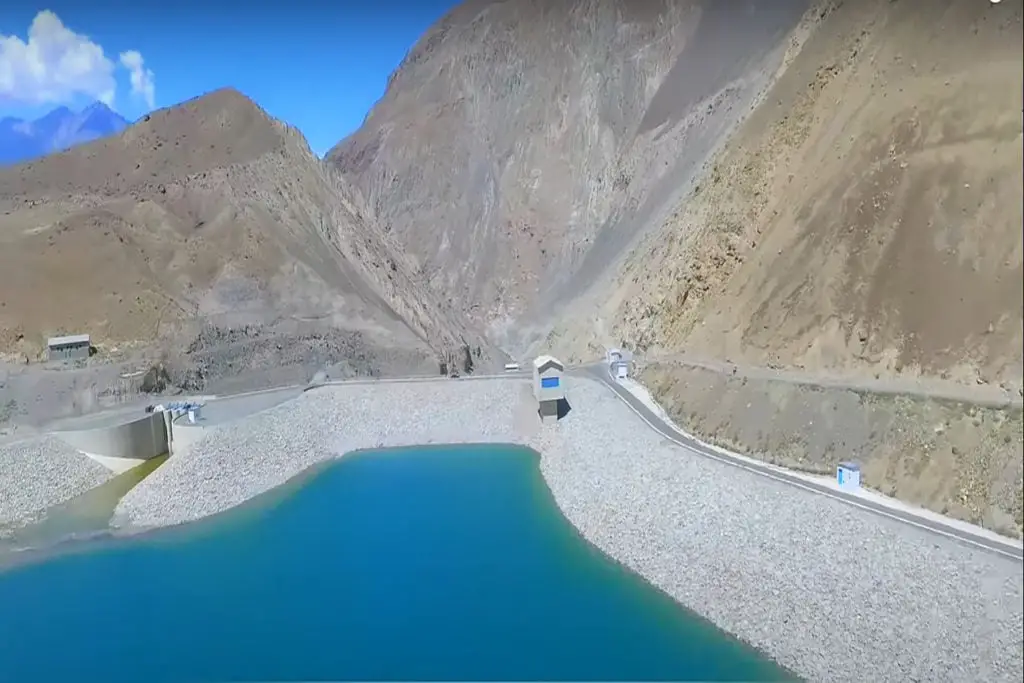Baintha Brakk, affectionately known as “The Ogre,” stands tall and majestic in the Panmah Muztagh subrange of the Karakoram mountain range in Gilgit-Baltistan, Pakistan. With its soaring height of 7,285 meters (23,901 feet) and rugged terrain, this imposing peak has earned a reputation as one of the most challenging mountains to conquer in the world of mountaineering.
Location and Notable Features
Baintha Brakk majestically rises above the north side of the Biafo Glacier, one of the central Karakoram’s major glaciers. It is situated about north of Skardu, the main town in the region, and approximately north of the roadhead at Askole.
What sets Baintha Brakk apart is its unique combination of altitude, height above local terrain, and steepness. Its complex granite tower stands as a testament to nature’s artistry and challenges climbers with its sharp, rocky features. For instance, the South Face of the peak impressively rises over above the Uzun Brakk Glacier, covering only a horizontal distance.
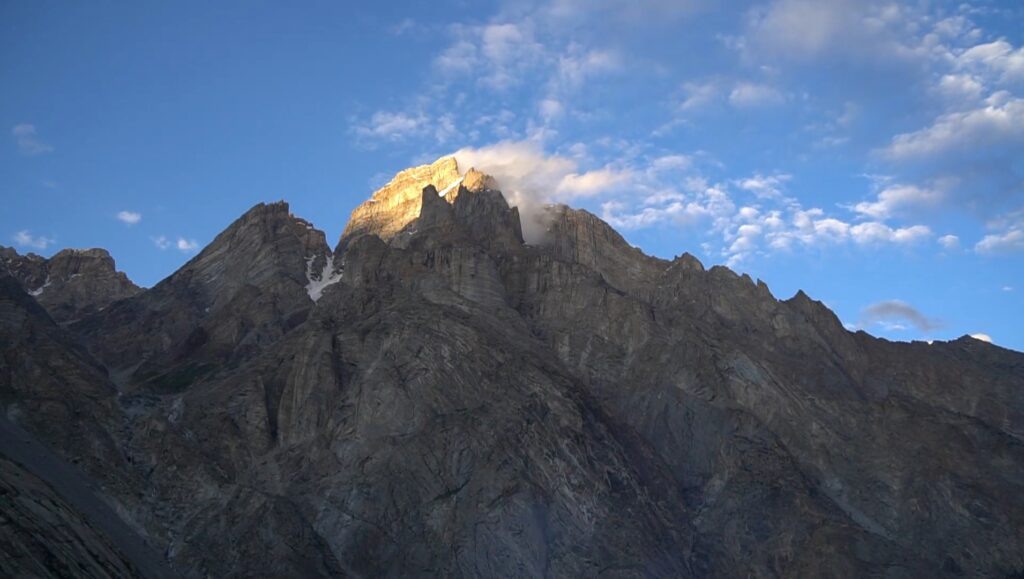
Baintha Brakk Climb
Baintha Brak is considered a challenging mountain to climb, and only a handful of climbers have managed to reach its summit.
The first successful ascent of Baintha Brakk was achieved by two British mountaineers, Doug Scott and Chris Bonington, in 1977. After two unsuccessful attempts in 1971 and 1976, they embarked on a grueling journey via the Southwest Spur to the West Ridge, eventually conquering both the West Summit and the Main Summit. The climb demanded difficult rock climbing at elevations over , pushing the boundaries of mountaineering achievements at that time.
The descent proved to be even more perilous for the climbers. Doug Scott suffered both legs’ fractures during the first rappel from the summit, while Chris Bonington endured two broken ribs and contracted pneumonia. Despite these harrowing challenges, the team eventually reached base camp, where they awaited rescue and medical assistance.
The second ascent of Baintha Brakk took place on 21st July 2001, made by Urs Stöcker, Iwan Wolf, and Thomas Huber via the South Pillar route. They noted that more than 20 expeditions had previously failed in their attempts to conquer the peak. Their successful ascent was hailed as one of the most remarkable mountaineering achievements of the 2001 season.
A third ascent was achieved by Americans Kyle Dempster and Hayden Kennedy on August 21, 2012, taking a new route up the peak’s challenging South Face. Their journey was accompanied by Josh Wharton, who unfortunately had to abandon the attempt due to altitude sickness.
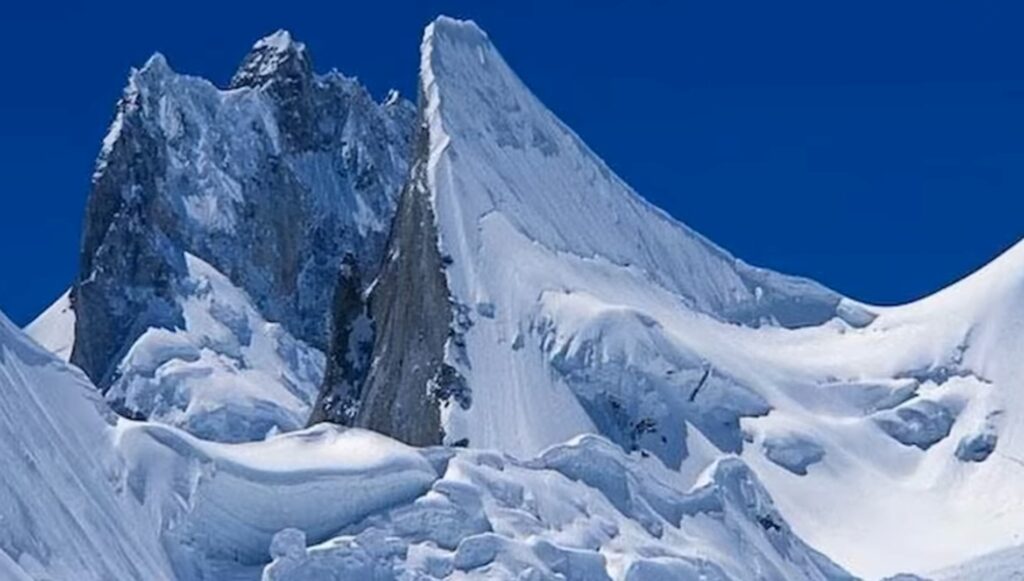
A Formidable Giant
The moniker “The Ogre” suits Baintha Brakk perfectly, given its immense scale, intricate shape, and treacherous incline. Aspiring climbers are well aware that any attempt to ascend this formidable giant is a struggle for survival right from the start. The peak’s sheer granite tower is steeper and rockier compared to many other peaks in the Karakoram, making it all the more alluring and challenging for mountaineers seeking the ultimate test of skill and endurance.
The mountain is known for its technical difficulties, with steep ice walls, crevasses, and avalanche-prone areas making the climb a real test of a climber’s skill and experience. The climb typically takes around three weeks, with climbers having to navigate their way through treacherous terrain, high-altitude sickness, and extreme weather conditions.
Despite its challenges, climbing Biantha Brak is a truly rewarding experience for those who are up for the challenge. The mountain offers breathtaking views of the surrounding landscapes, including the nearby peaks of Tirich Mir and the Hindu Kush range. The climb also offers an opportunity to experience the local culture of the Chitral region, with trekkers having the chance to interact with locals and experience their unique way of life.
While the climb is challenging, it is important to note that climbers need to be properly prepared and equipped for the journey. This includes having the necessary climbing gear, as well as being in good physical shape and acclimatizing to the high-altitude conditions. Hiring a local guide or joining a guided expedition is highly recommended to ensure safety and proper guidance throughout the climb.
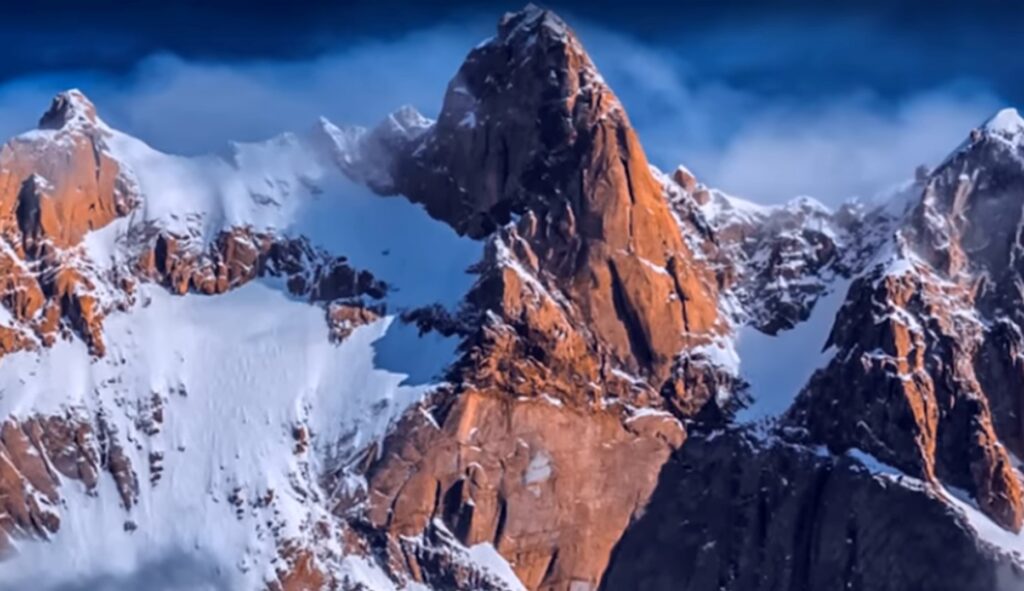
The Undying Quest
Baintha Brakk, “The Ogre,” continues to beckon mountaineers with its unyielding challenge. Aspiring climbers from around the world are drawn to this formidable peak, seeking to etch their names in history by conquering its rocky slopes and claiming victory over nature’s toughest adversary.
For those who dare to accept its challenge, Baintha Brakk promises an unforgettable and life-changing experience, testing not only physical abilities but also mental strength and perseverance. As the years pass, the legend of “The Ogre” grows, as does the admiration for those who dare to face its might and emerge victorious.
In the realm of mountaineering, Baintha Brakk holds a special place—a testament to human resilience and the undying spirit of exploration and adventure. As climbers continue to test their limits and pursue the uncharted, this mighty peak remains an icon of courage, determination, and the irresistible allure of the mountains.
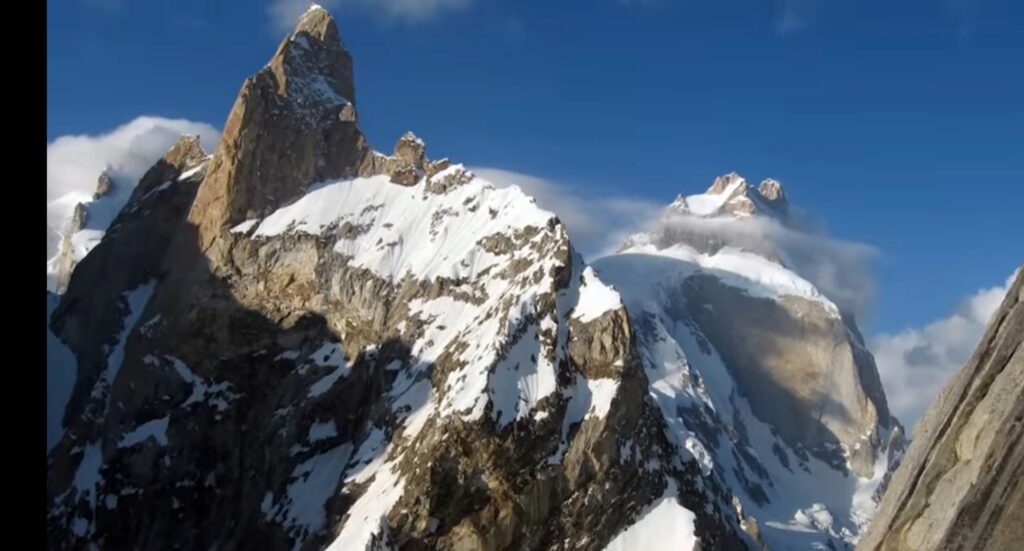
In conclusion, Baintha Brak is a challenging but rewarding mountain that offers a true test of a climber’s skill and endurance. With its stunning natural beauty and rich cultural heritage, climbing this magnificent peak is an experience that is sure to stay with you for a lifetime.

